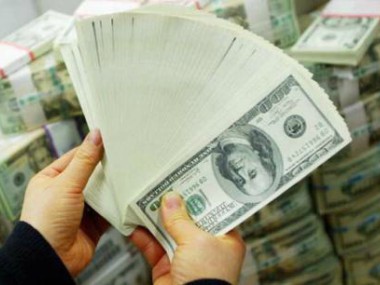Mumbai: The current account deficit (CAD) narrowed to 0.9 percent of GDP or $6.3 billion in the July-September quarter of the current fiscal from 2.9 percent or $19 billion in same period last year, according to the RBI data.
.@RBI: July-Sep current account deficit at $6.3 bn vs $19.0 bn (YoY); at 0.9% of GDP vs 2.9% of GDP (YoY) pic.twitter.com/NDKdk4YZnP
— CNBC-TV18 (@CNBCTV18Live) December 31, 2019
In the first quarter, the deficit stood at 2 percent of Gross Domestic Product (GDP) or $14.2 billion. “The contraction in the CAD was primarily on account of a lower trade deficit at $38.1 billion as compared with $50 billion a year ago,” RBI said in a release. [caption id=“attachment_4292949” align=“alignleft” width=“380”] Representational image. News 18.[/caption] In the first half of the current fiscal, the CAD narrowed to 1.5 percent of GDP from 2.6 percent in the same period in FY2018-19 on the back of a reduction in the trade deficit. Trade deficit shrank to $84.3 billion in the first half of FY2019-20 from $95.8 billion last year, the RBI said. Net foreign direct investment stood at $7.4 billion, almost the same level as in second quarter of 2018-19. Helped by net purchases in the debt market, foreign portfolio investment recorded a net inflow of $2.5 billion in the September 2019 quarter, against an outflow of $1.6 billion a year ago. In the April-September 2019 period, while the net foreign direct investment (FDI) inflows were at $21.2 billion, portfolio investment recorded a net inflow of $7.3 billion. Net services receipts increased 0.9 percent on in July-September on a y-o-y basis, on the back of a rise in net earnings from computer, travel and financial services, the RBI said. There was a growth of $5.1 billion in the foreign exchange reserves in the September 2019 quarter, compared with a depletion of $1.9 billion a year ago. During the first half of 2019-20, there was an accretion of USD 19.1 billion of the foreign exchange reserves, the RBI said. The “trade deficit is lower primarily because imports have fallen at a faster rate than exports due to weak manufacturing activity and lower imports of raw materials and capital goods,” said Rupa Rege Nitsure, chief economist at L&T Financial Services. Data last month showed annual economic growth slowed to 4.5 percent in the September quarter, its weakest pace since 2013. The current account deficit stood at $6.3 billion in the September quarter versus $19 billion a year ago. The merchandise trade deficit narrowed to $38.1 billion from $50.0 billion, the central bank said. Balance of payments, the difference between the current account and capital account, stood at a surplus of $5.1 billion in the September quarter compared with a deficit of $1.9 billion a year ago, data showed. However, the narrowed from $14 billion seen in the June quarter. Net inflow on account of external commercial borrowings (ECBs) stood at $3.2 billion compared with $2 billion last year. Net foreign direct investment was largely unchanged at $7.4 billion. Private transfer receipts, mainly representing remittances by Indians employed overseas, rose to $21.9 billion, up 5.2 percent from a year ago, the data showed. “Both the critical components of foreign exchange reserves — exports and FDI — have not shown any improvement Y-O-Y. On the other hand, portfolio inflows (hot money) and ECBs (debt capital) have increased significantly. This kind of improvement is not sustainable,” L&T’s Nitsure said. — With Reuters inputs


)

)
)
)
)
)
)
)
)



